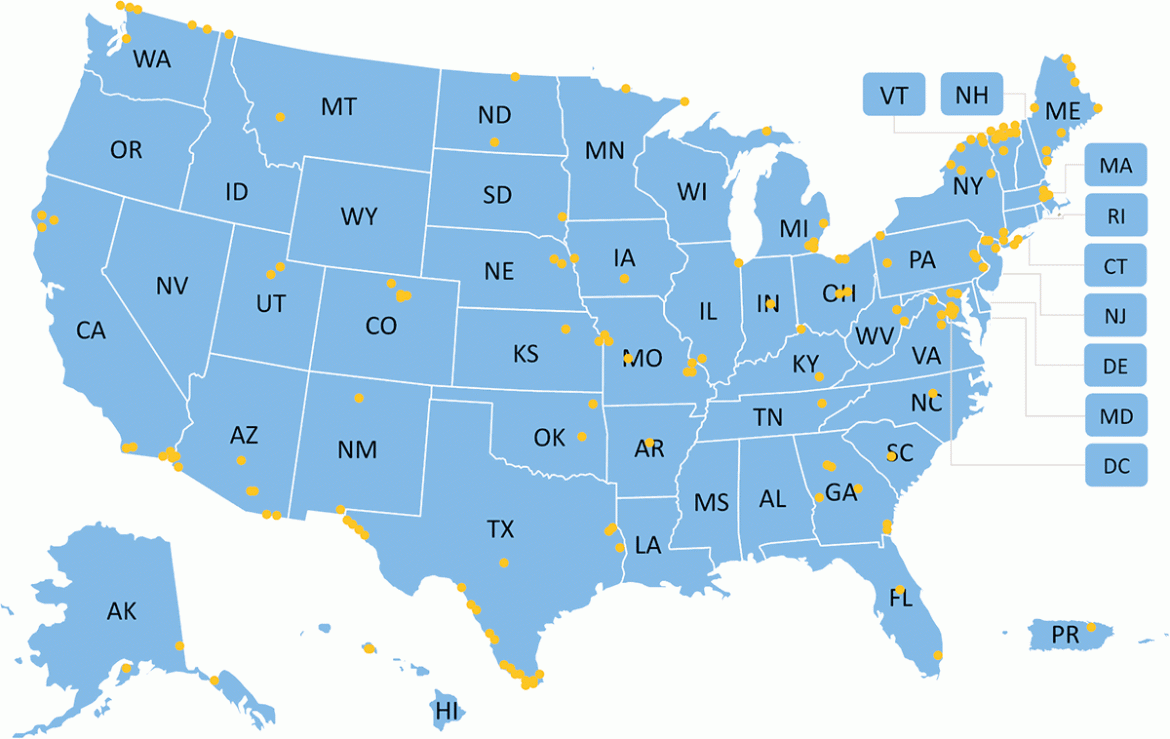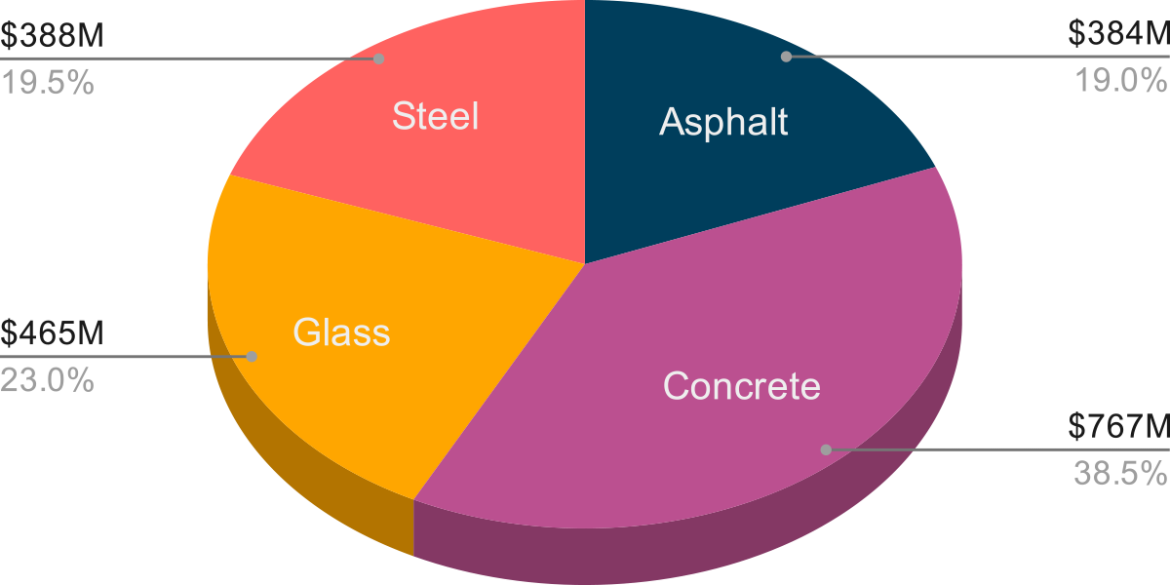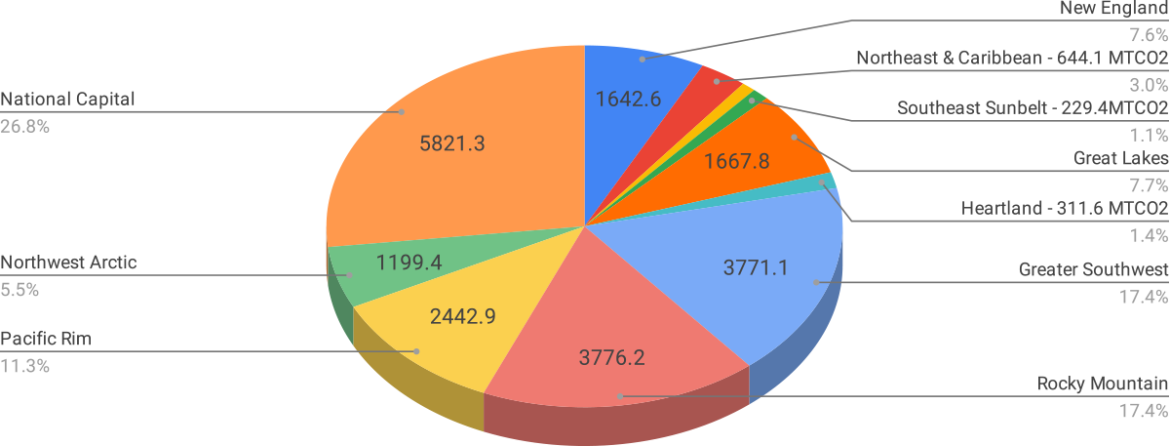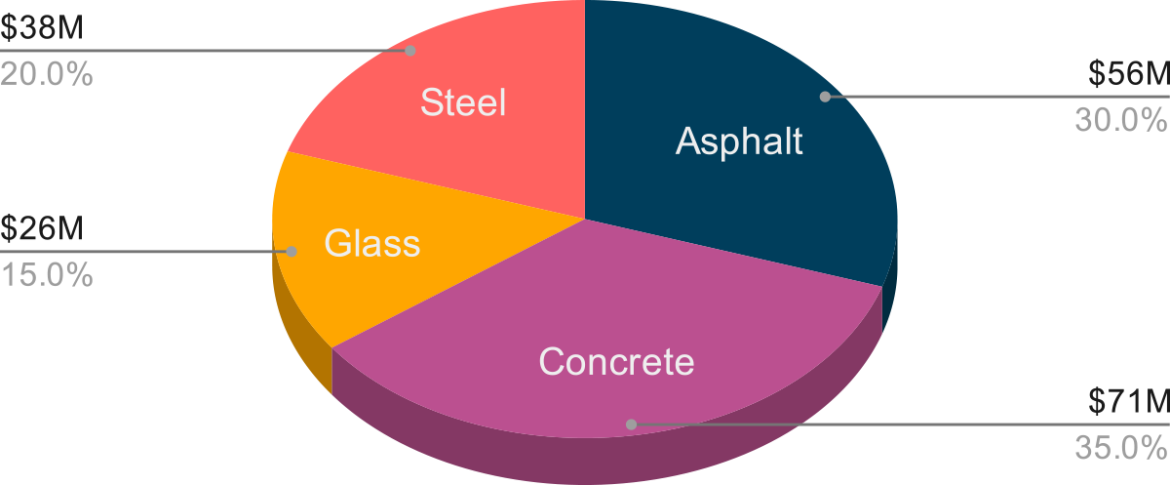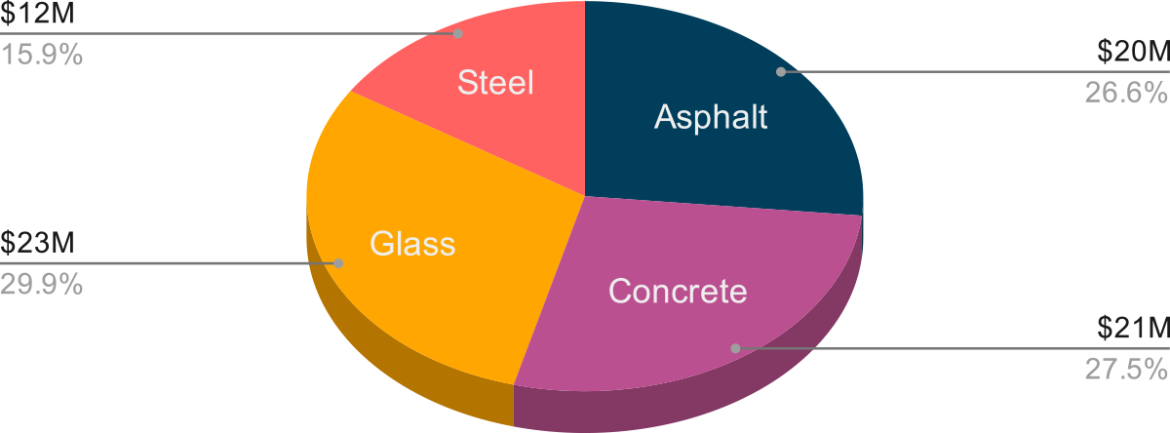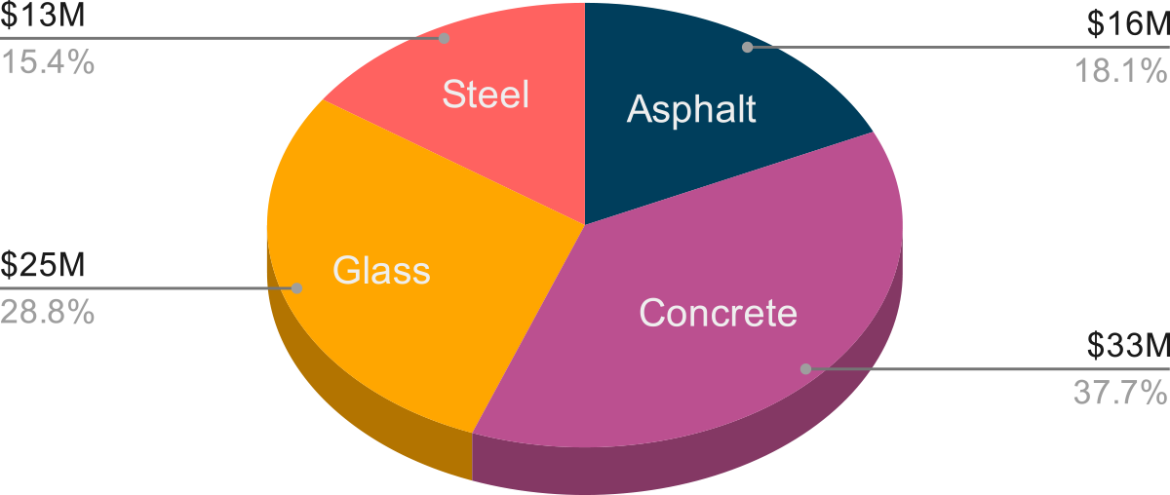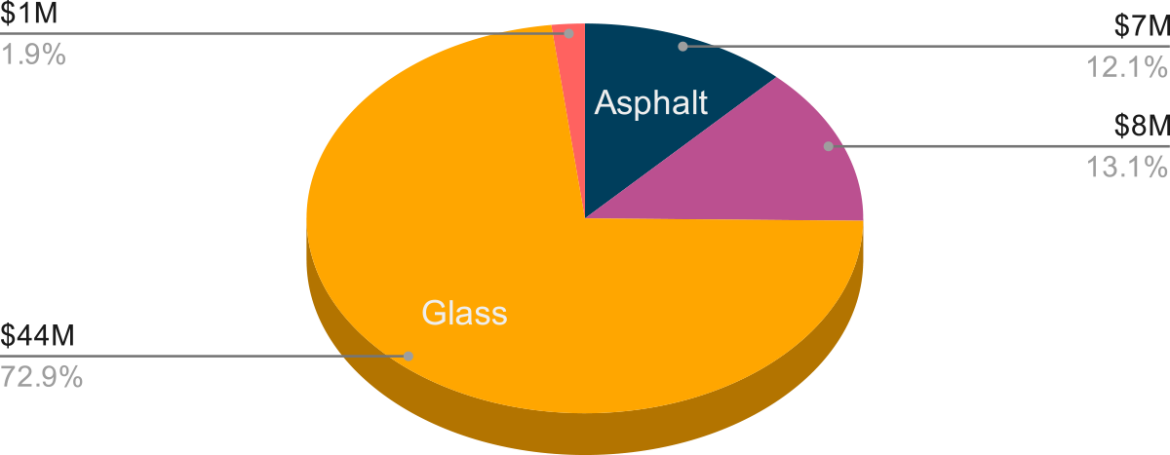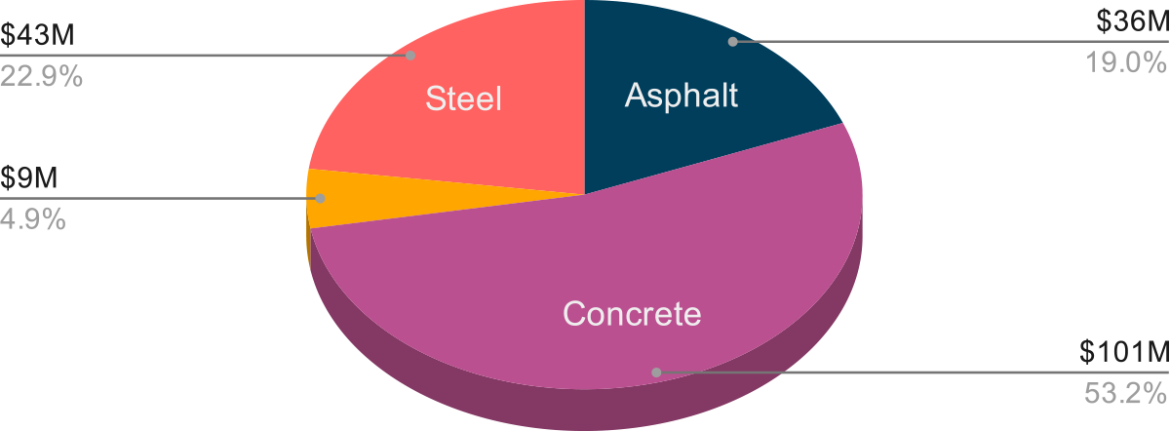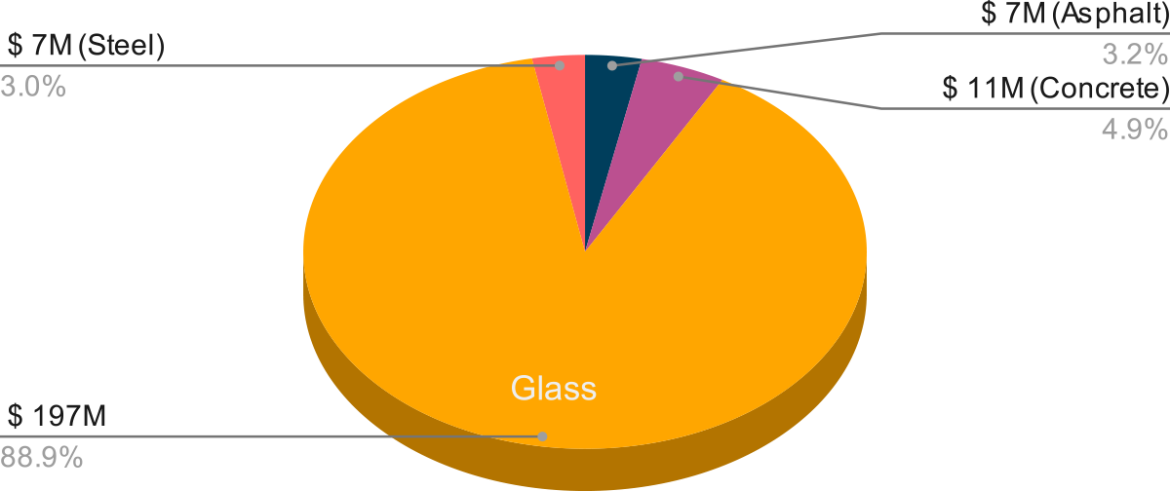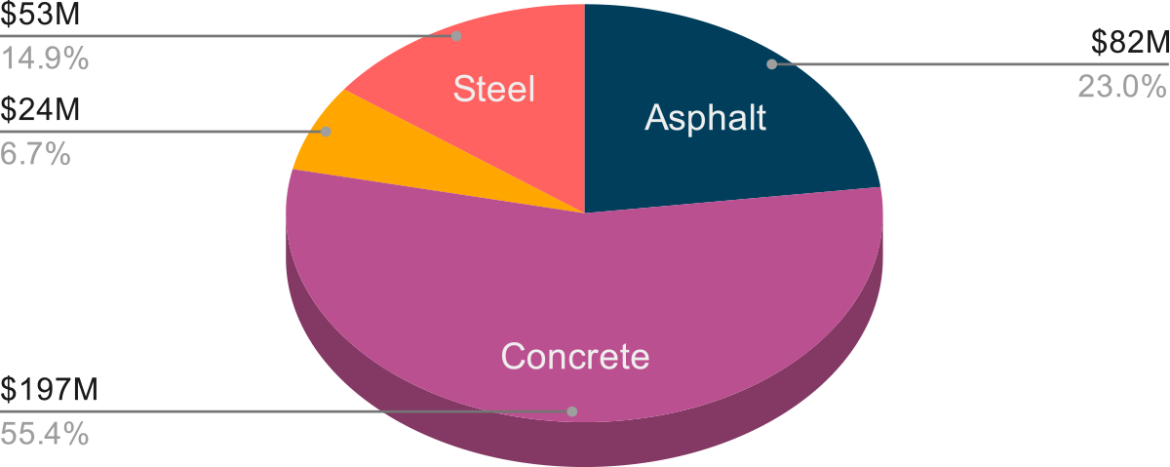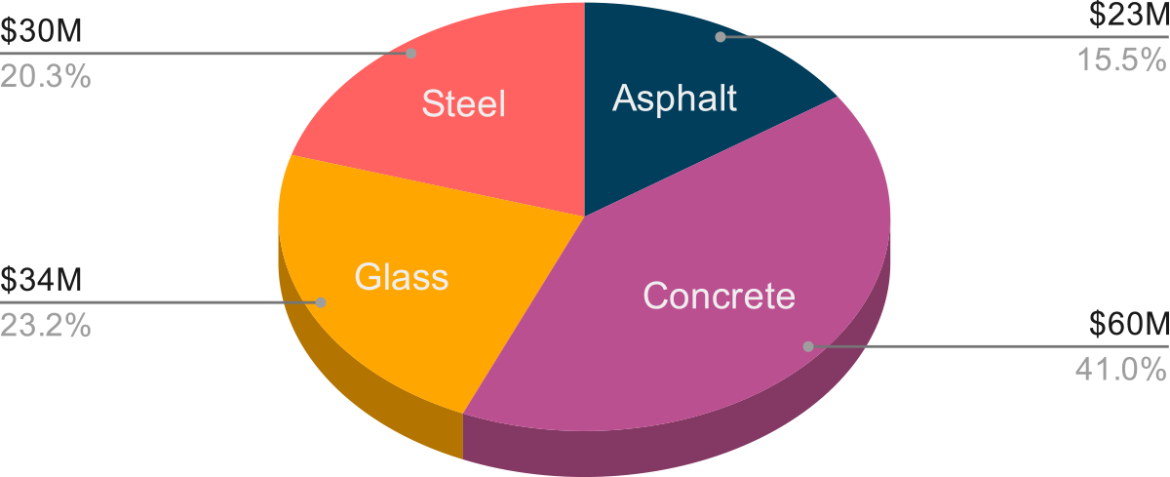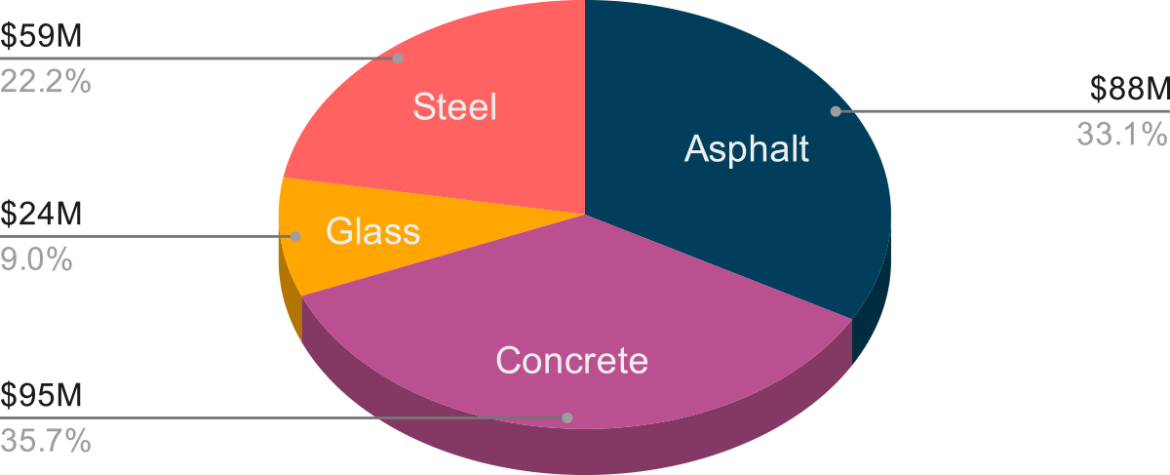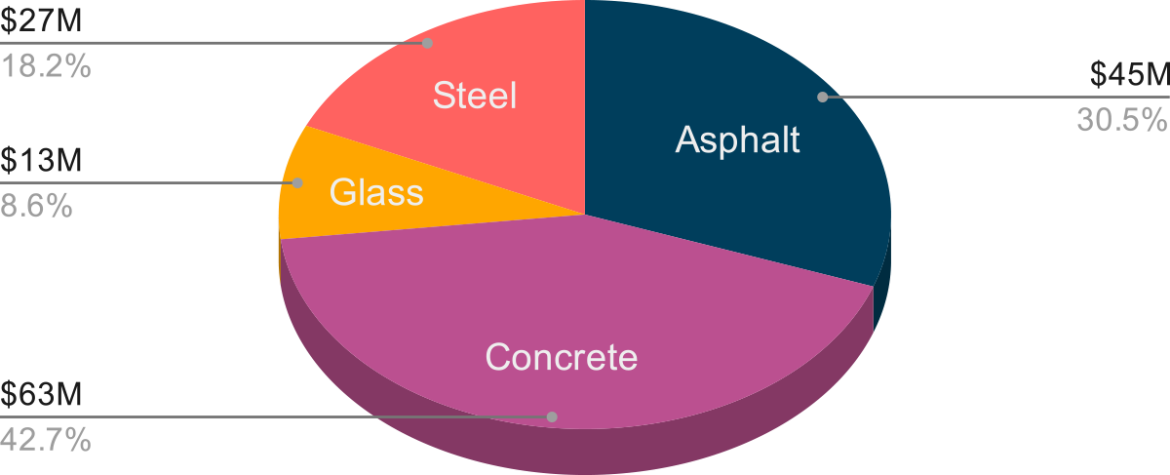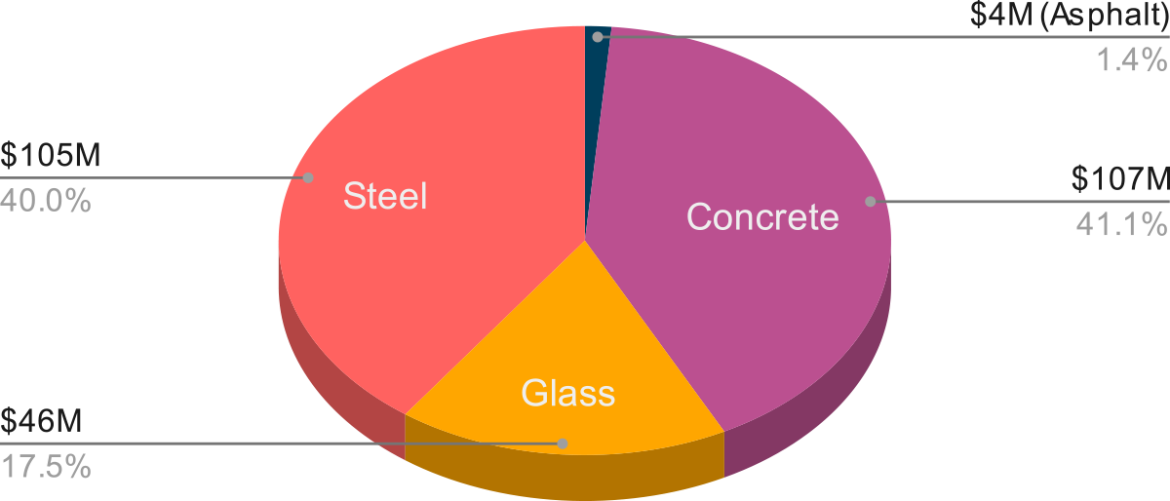Low-embodied carbon program details
The Inflation Reduction Act of 2022 provided $3.375 billion to our agency to invest in federal buildings to help reduce carbon emissions and catalyze innovation. Section 60503 appropriated $2.15 billion for the procurement of low embodied carbon construction materials.
This investment furthers the Federal Buy Clean Initiative, and will help catalyze our purchasing power to spur markets for American-made products that have substantially lower levels of embodied greenhouse gas emissions associated with their production, use, and disposal. Additionally, the funding will help us achieve federal sustainability goals including a net zero emissions federal building portfolio by 2045, and net-zero emissions procurement by 2050, while supporting good American manufacturing jobs.
By incorporating low-embodied carbon material into our construction projects, we estimate it will reduce total embodied carbon emissions associated with these projects by at least 22,000 and up to 40,000 metric tons of carbon dioxide equivalent.
Actual reductions will depend on the final global warming potential values reflected in product-specific material, or Environmental Product Declarations that we provide for completed projects. Additionally, our LEC projects help send the demand signal for LEC materials to manufacturers across the country.
Visit our LEC program update page for the latest progress.
Our process for identifying qualifying projects
We selected projects to deliver work across the country, meet our most pressing repair and construction needs, and align with opportunities to incorporate LEC materials. We are leveraging:
- $561 million in LEC funding on 16 large-scale capital projects. These investments help us continue to reshape our portfolio and invest in core assets.
- $507 million in LEC funding on 99 smaller-scale capital projects. These smaller-scale projects enable us to address minor renovation and alteration needs in the Public Buildings Service portfolio.
- $935 million in LEC funding on 39 Bipartisan Infrastructure Law land port of entry projects, which often need larger amounts of material in the four IRA LEC categories.
In alignment with the Federal Buy Clean Initiative, LEC funding is limited to asphalt, concrete, glass and steel and the necessary expenses to design, construct and install the materials. Therefore, LEC funding requires us to leverage other funding sources for remaining design, construction, management and inspection costs not related to these materials.
Some proposed projects will use IRA funds from Section 60502 and Section 60504. Our Capital Program, Minor Repairs and Alterations Program, and BIL Program will also supplement projects receiving IRA funding.
We continue to report a significant backlog of repairs and renovations that require reinvestment dollars across the portfolio, including $14.9 billion reported in fiscal year 2023. Our Basic Repairs and Alterations funds and full access to the Federal Buildings Fund will be critical to pay for necessary construction expenses and support execution of the LEC program within the required obligation timeframes.
Buy American requirements and IRA LEC requirements
All materials and products procured for GSA projects must comply with all applicable federal laws. GSA IRA LEC materials requirements build on the continued application of existing laws such as the Buy American Act of 1933 (updated via the Build America, Buy American Act, which was enacted as part of the Infrastructure Investment and Jobs Act of 2021 [PDF]), and the Trade Agreements Act of 1979 [PDF].
For GSA’s $2.15B appropriation for LEC materials (IRA section 60503-funded procurements [PDF]), existing trade, procurement, and domestic content-related laws will be applied first, before applying GSA’s IRA LEC material requirements
Interagency coordination: Buy Clean Technical Advisory Group
As part of the Federal Buy Clean Initiative in support of the Buy Clean Task Force, the Buy Clean Technical Advisory Group (TAG) meets bi-weekly. The Buy Clean TAG is led by the White House Council on Environmental Quality and Climate Policy Office, and includes representatives from the Departments of Defense, Energy, Health and Human Services, Homeland Security (FEMA), Interior, State, and Transportation, as well as representatives from EPA, GSA, and Veterans Affairs. Agencies’ Buy Clean initiatives range from advisory interests to technical support to fully-funded procurement or grant programs.
Each meeting provides an opportunity for representatives to share the latest updates from their agency to deliver on the Biden-Harris Administration’s Federal Buy Clean Initiative. This promotes cross-agency dialogue that expedites research and sharing of pre-decisional information for feedback from federal agency peers to promote a whole-of-government approach.
Following the early 2023 public comment period for GSA’s discussion draft of LEC material requirements, and GSA updates to the Buy Clean TAG, FEMA arranged agency-to-agency conversations with GSA about data resources, training opportunities, and methodologies for setting up a Buy Clean program. There have also been mutually-beneficial information exchanges between GSA, EPA, FHWA, the Department of Defense, and various offices within the Department of Energy.
Last but certainly not least, GSA is also monitoring FHWA’s outreach to industry organizations to identify data for determining whether materials qualify as substantially lower embodied carbon under the EPA Interim Determination.
EPA is also a key Buy Clean TAG participant, and has IRA funding for a low carbon material labeling program in addition to EPD grants. To leverage the implementation experience from GSA’s first-to-market low embodied carbon material program, GSA shares LEC product and material data and other documentation with EPA. EPA’s intent is to understand greenhouse gas metrics, cost implications, procurement lessons, and other key data points associated with GSA’s implementation of the EPA Interim Determination required by IRA Section 60503. These findings can help inform future EPA efforts to support industry, capitalize on strengths, and address challenges.
Environmental product declarations
EPDs provide third-party verified, standardized documentation of a material’s GWP throughout all relevant stages of its manufacturing. GSA’s approach is based on EPA’s Interim Determination [PDF], which explicitly requires that materials demonstrate compliance with GWP limits through a third-party verified EPD. To help promote robust EPDs, GSA has joined Product Category Rule committees, which write the rules for what goes into EPDs. GSA is also engaged with an interagency PCR working group led by the U.S. EPA. This work enables the GSA to partner with industry to promote PCRs that result in more robust product- and facility-specific EPDs with higher-quality data, more open transparency, and greater reliability.
As GSA continues to implement its $2.15 billion IRA LEC program, more projects will be seeking qualifying LEC materials. This will underline to industry the importance of obtaining robust EPDs, and will strengthen GSA’s ability to drive market change. GSA’s government-leading investments in low embodied carbon construction materials will be complemented by EPA’s “Reducing Embodied Greenhouse Gas Emissions for Construction Materials and Products” program. Additionally, FHWA’s $2B IRA appropriation (also for low carbon concrete, asphalt, steel and glass) and a dozen other Federal agencies prioritizing LEC materials through Buy Clean help build this momentum and will further spur the market.
Low embodied carbon acquisition criteria
Our project solicitations will favor offers by applying a sustainability source selection evaluation factor in our IRA-funded projects that incorporate asphalt, concrete, glass, and steel with substantially lower levels of embodied carbon.
This approach will call for offeror commitments to furnish IRA-eligible materials with the lowest available global warming potential values for each applicable material type as reported through a Type III EPD, in accordance with the EPA Interim Determination.
Low embodied carbon pilot
Overview
Starting in May 2023, the GSA piloted interim requirements for the use of LEC construction materials in GSA projects funded by the Inflation Reduction Act of 2022. The requirements were developed based on industry feedback, and through collaboration with the U.S. Department of Transportation’s Federal Highway Administration, the U.S. Environmental Protection Agency, and the Federal Buy Clean Task Force. The pilot consisted of eleven new construction projects, land port of entry projects, limited scope modernizations, and paving projects with total estimated low embodied carbon materials valued at more than $300 million. The pilot evaluated GSA’s Interim IRA LEC requirements on a variety of project types utilizing four material categories prioritized by EPA for their embodied carbon reduction opportunities: asphalt, concrete, glass and steel.
The pilot marked a milestone for the Biden-Harris Administration’s clean manufacturing goals, including the Federal Buy Clean Initiative and its efforts to strengthen American leadership in cutting industrial emissions, building resilient supply chains, and supporting good jobs. As part of Buy Clean, GSA’s IRA investments will help catalyze the market for U.S. made low carbon construction materials, promote emerging and sustainable technologies, support American workers, convert GSA facilities to high-performance green buildings, and combat the climate crisis. GSA’s IRA work will accelerate efforts to achieve a net zero emissions federal footprint, catalyze American innovation, and save taxpayers millions in energy costs.
Purpose
The pilot sought to gather market research on the availability of LEC materials, to raise awareness of Buy Clean goals, and to build market capacity for providing compliant materials. It helped GSA gain a better understanding of potential supply chain gaps and the relative availability of the material types covered by EPA’s Interim Determination [PDF], which guides GSA and FHWA on how to implement their low carbon IRA appropriations. Extensive collaborative engagement with manufacturers before and throughout the pilot helped GSA gain insights on the suitability of available LEC construction materials for the performance needs of varied types of projects, along with their environmental product declarations, global warming potentials, quantities, costs, product category rules, and ENERGY STAR Energy Performance Scores.
By testing GSA’s LEC requirements on real-world projects across the country, GSA obtained experience acquiring LEC materials and integrating impactful new material sustainability considerations into the procurement process as an element of construction and modernization projects at land ports of entry, U.S. courthouses, and Federal buildings in varied geographical regions. The pilot also yielded insights about GSA’s IRA project procurement process and contracting needs, such as vendor requests for additional time to develop initial EPDs in certain remote areas.
Map of all projects
Find a full list of IRA clean construction projects that you can filter to find LEC projects. The list is subject to change based on pricing, market responsiveness, and material availability.
LEC materials national overview
Regional materials breakdown

 U.S. General Services Administration
U.S. General Services Administration
